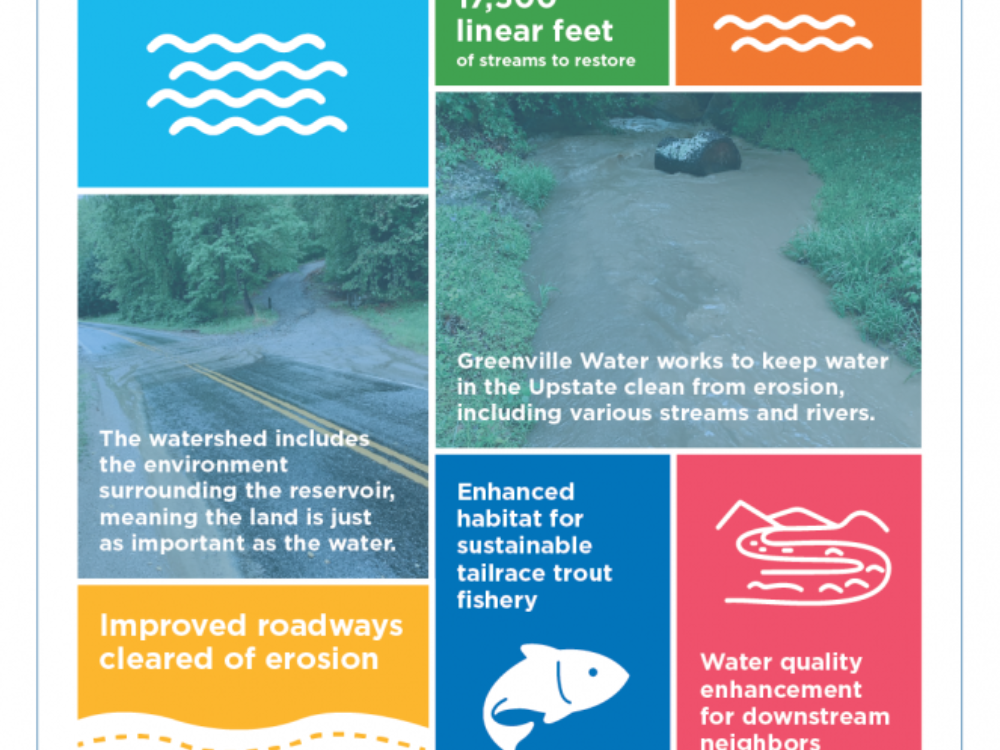
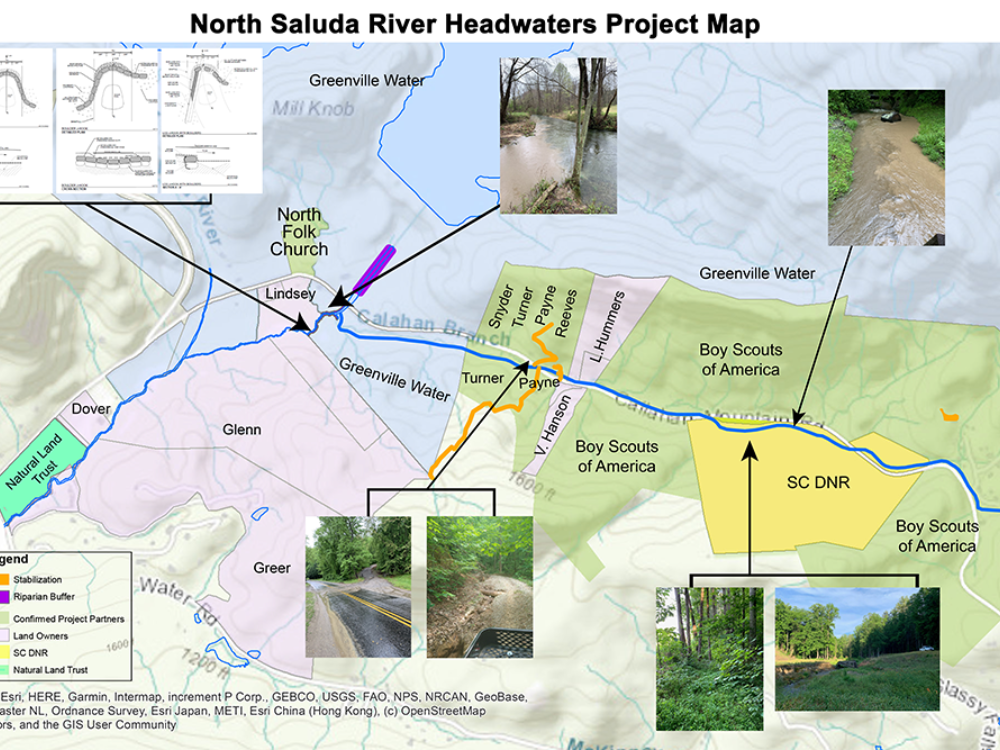

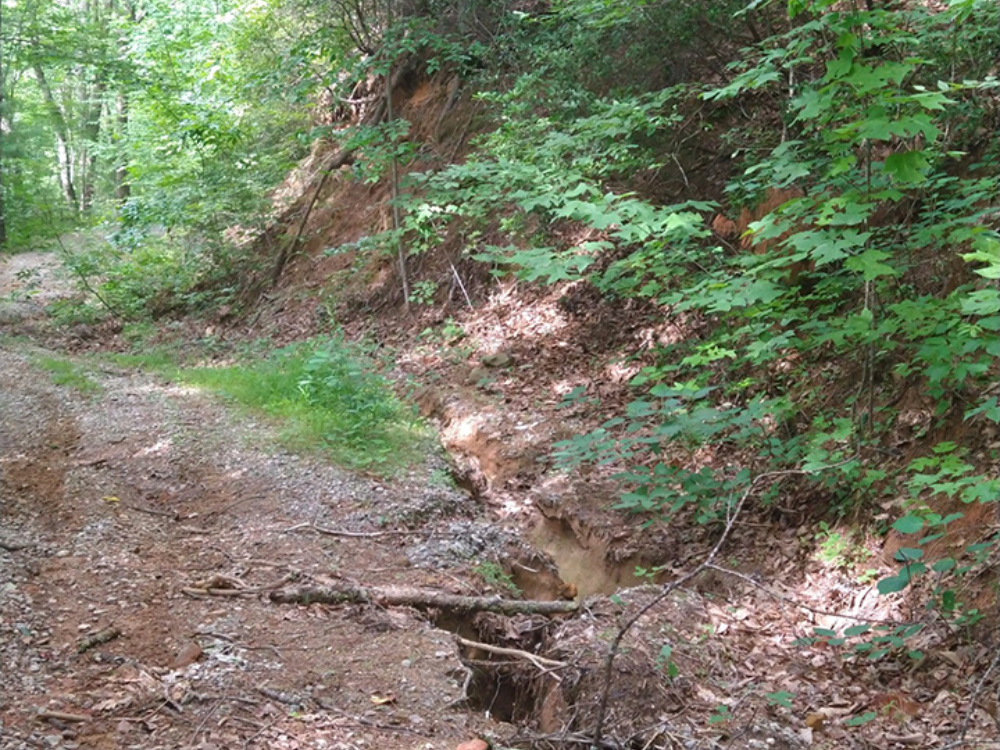
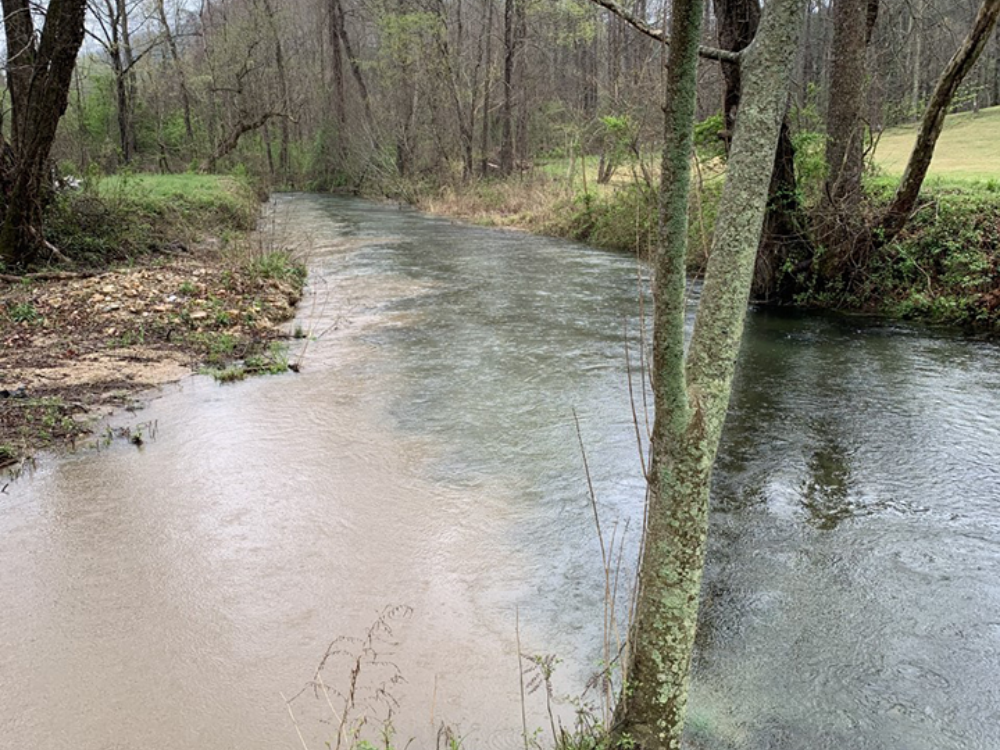



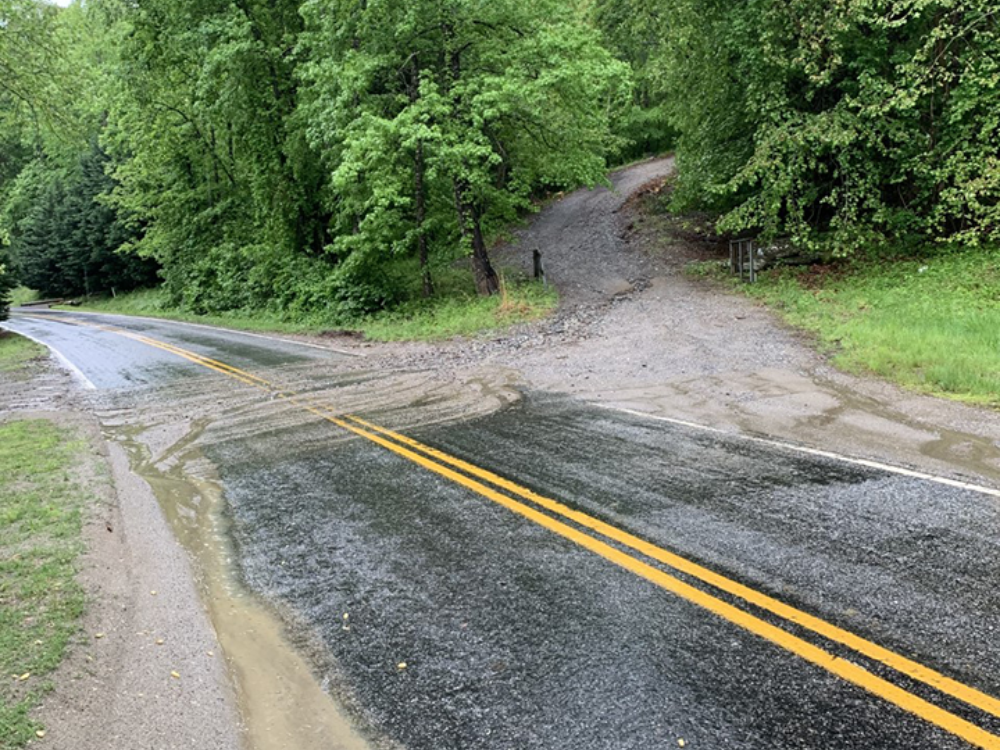
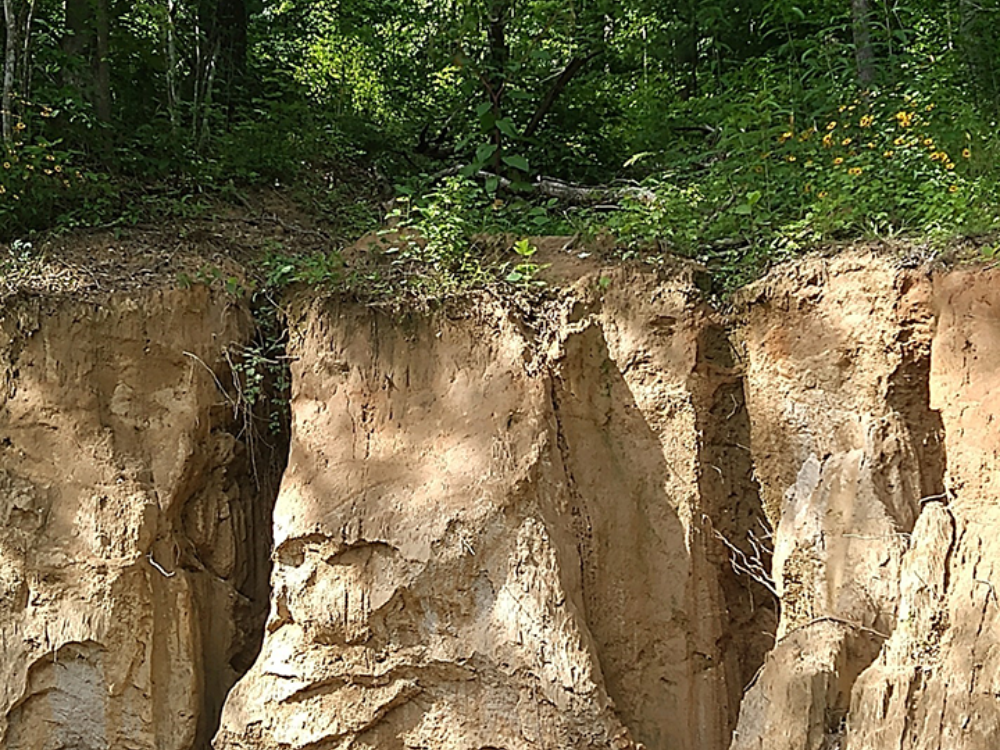
Jan 01, 2022
Beyond providing some of the best water in the world, Greenville Water is also working to enhance local rivers and expand recreational opportunities through projects such as the restoration along the North Saluda River that will improve ecological value and support a trout fishery that may rival that of the South Saluda River.
To support this project, Greenville Water was recently awarded a grant from South Carolina Department of Health and Environmental Control (SCDHEC) to restore 17,500 linear feet of stream in a 1,200-acre portion of the Lower North Saluda River Watershed. Greenville Water is partnering with SCDHEC, the Environmental Protection Agency, Boy Scouts of America, Trout Unlimited and several property owners in the area to ensure the success of the project.
To achieve this, the project is dived into three prioritized phases which support the overarching goal to lessen sediment and improve water quality in the North Saluda River.
Phase 1: Complete restoration of river channel and banks of 1,000 linear foot section of stream where the North Saluda River meets the Callahan Branch.
The streambanks in this area are highly eroded and the stream bed has little diversity due to channelization and sediment deposition. Structures will be put in place to help redistribute sedimentation and bank erosion. This will add stream bed diversity for macroinvertebrates and fish.
A riparian buffer that includes native grass, trees and shrubs will be installed along the entire 1,000 linear foot section. The buffer will mitigate erosion, keep the water cool and provide an added layer of filtration to any runoff.
Phase 2: Will focus on river channel stabilization and remove an estimated 4,500 cubic yards of sediment within the channel.
Excess sedimentation will be excavated from the channel and added to the east side of the channel to dry out, then it will be graded and seeded with native grasses that require little to no maintenance aiding the stabilization and naturalization of the area.
Phase 3: The final phase will focus on the sediment inputs along Callahan Branch. Several properties have been identified for ditch stabilization, permanent seeding, heavy use area stabilization, and gravel/dirt road stabilization to lessen this runoff into the North Saluda River.
A significant piece to ensure long-term success will include education on maintenance and habits that will lessen the detrimental effects of stormwater runoff.
Ultimately, the restoration project will restore natural stream pattern, stabilize the streambank, fix legacy issues from urbanization, reduce stormwater runoff, lessen agricultural runoff, address eroding unpaved roadways, improve habitat along river corridor, provide habitat for sustainable tailrace trout fishery, improve water quality, and restore water quality for our downstream neighbors.
PFAS not detected in Greenville’s source and finished water
Read ArticleGreenville Water collaborates with SCFC and TNC to conduct Prescribed Fire on Hogback Mountain
Read ArticleGreenville Water Wins Prestigious AWWA 2024 Exemplary Source Water Protection Award
Read ArticleState of South Carolina to observe “Water Professionals Day” Annually
Read Article